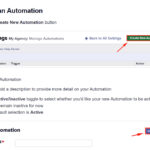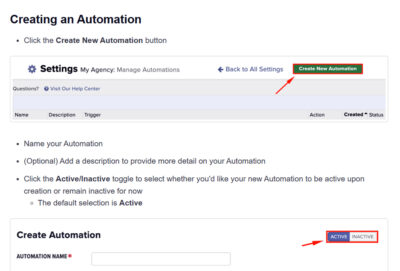In the world of agency recruitment and search consultancy, your relationship with clients is just as important as your ability to source and place top talent. One of the most critical skills for recruiters is client negotiation—the process of discussing terms, fees, expectations, and timelines with your clients in a way that benefits both parties and leads to more placements. Mastering client negotiation is key to maintaining long-term, successful relationships and securing a consistent flow of business with top clients.
This article from Top Echelon Recruiting Software will provide actionable insights into how agency recruiters and search consultants can become better negotiators. Whether you’re discussing fees, exclusivity agreements, or placement guarantees, mastering negotiation is essential to ensuring both you and your client are satisfied with the outcome and that you can make more placements, more efficiently.
1. Understand Your Client’s Needs and Business Goals
The foundation of successful client negotiation begins with a deep understanding of your client’s business, industry, and specific hiring needs. Before you even begin negotiating terms, take the time to fully understand what success looks like from the client’s perspective.
- Research their industry and competitors: When you know the challenges and trends affecting your client’s industry, you can better position yourself as a strategic partner, not just a service provider. This insight allows you to craft solutions tailored to their specific hiring challenges, making your services more valuable and less negotiable on price.
- Understand their pain points: Are they struggling to fill niche roles? Do they need to hire quickly due to a sudden expansion or staff turnover? By understanding your client’s pain points, you can tailor your negotiation strategy to address those issues, presenting yourself as the solution to their problems.
- Align with their long-term goals: Rather than just focusing on immediate placements, consider how your services align with the client’s broader business goals, such as building a diverse workforce, improving retention, or expanding into new markets. This allows you to present your recruitment services as a key component of their overall success, giving you more leverage during negotiations.
Key takeaway: The more you know about your client’s business, the more effectively you can negotiate. Position yourself as a strategic partner by aligning your services with their broader business goals.
2. Set the Stage for Collaboration, Not Confrontation
Negotiation doesn’t have to be a battle. In fact, the best negotiations feel like collaborative problem-solving sessions where both sides work together to find a solution that benefits everyone. From the very first interaction, frame your negotiation as a partnership.
- Focus on mutual benefits: Approach the negotiation with a mindset of finding a win-win solution. For example, if a client pushes back on your fees, instead of immediately conceding, explain how your services can help them achieve better long-term outcomes, such as reducing turnover or improving team performance.
- Emphasize long-term value: Highlight the long-term benefits of working with you, such as access to a larger talent pool, expertise in filling niche roles, or faster placements. By framing your relationship in terms of long-term value rather than short-term costs, you make it easier for clients to see the benefits of investing in your services.
- Listen actively: One of the most critical skills in negotiation is listening. Allow your clients to voice their concerns, objectives, and limitations. Active listening builds trust and shows that you are committed to understanding their needs, making it easier to reach a mutually beneficial agreement.
Key takeaway: Frame your negotiation as a collaborative process aimed at mutual benefit. Focus on long-term value and actively listen to your client’s needs to foster a positive negotiation environment.
3. Master the Art of Fee Negotiation
Fee negotiation is often the most challenging part of the client negotiation process. Clients may have budget constraints or competing offers from other recruitment agencies, making it crucial for you to justify your fees while remaining flexible.
- Demonstrate the value of your services: When negotiating fees, it’s essential to articulate the value of your services beyond simply filling roles. Highlight your success in placing high-quality candidates, your expertise in specific industries, or your ability to deliver candidates faster than competitors. Use specific examples and metrics (such as retention rates or average time-to-fill) to back up your claims.
- Be transparent about your pricing model: Explain how your fees are structured, whether they’re based on contingency, retained searches, or flat rates. Transparency helps clients understand that your fees reflect the time, resources, and expertise required to find the right candidates. This can reduce pushback and make them more willing to accept your pricing.
- Be willing to negotiate other terms in exchange for fees: If a client pushes for a lower fee, consider negotiating other terms in exchange, such as exclusivity, longer placement guarantee periods, or a higher volume of business. This allows you to maintain profitability while offering the client added value in other areas.
Key takeaway: Demonstrate the value of your services and be transparent about your pricing model. If necessary, negotiate other terms (like exclusivity) instead of simply lowering your fees.
4. Negotiate Exclusivity for More Control and Better Results
Securing exclusivity with your clients can lead to more placements and better outcomes, both for you and the client. When you have exclusivity, you can dedicate more time and resources to finding the best candidates without the pressure of competing with other agencies.
- Explain the benefits of exclusivity: Many clients hesitate to offer exclusivity because they believe working with multiple agencies increases their chances of finding the right candidate. However, explain that exclusivity allows you to dedicate more focused time and effort to their search, resulting in better-qualified candidates and faster placements.
- Negotiate exclusivity for high-priority roles: If a client is hesitant to grant exclusivity for all roles, suggest exclusivity for high-priority or hard-to-fill positions. This gives you a better chance of success in placing top candidates and builds trust with the client.
- Offer incentives for exclusivity: To sweeten the deal, consider offering clients incentives for granting exclusivity, such as discounted fees for future roles, a longer placement guarantee, or faster turnaround times. This makes it easier for clients to see the value in giving you exclusive access to their open positions.
Key takeaway: Exclusivity gives you more control over the hiring process and leads to better results. Clearly explain the benefits of exclusivity to clients and be prepared to offer incentives to secure exclusive agreements.
5. Set Clear Expectations and Timelines
One of the main causes of friction during the recruitment process is mismatched expectations. When clients expect candidates to be delivered faster or at a higher quality than is realistic, it can lead to dissatisfaction, strained relationships, and lost placements. Setting clear expectations from the outset can prevent these issues and lead to smoother negotiations.
- Define deliverables and timelines: Be upfront about how long the recruitment process will take and what clients can expect at each stage. For example, clarify how long it will take to source candidates, conduct interviews, and present shortlists. Setting realistic timelines prevents misunderstandings and keeps the client relationship on track.
- Clarify the client’s role: Make sure your client understands their responsibilities during the process, such as providing feedback on candidates promptly, making themselves available for interviews, and communicating any changes in job requirements. This ensures that both parties are aligned and that there are no unnecessary delays in the process.
- Use a Service Level Agreement (SLA): For larger clients or retained searches, consider using a Service Level Agreement (SLA) that outlines key deliverables, timelines, and expectations. This formal agreement ensures that both parties are committed to specific outcomes, reducing the likelihood of disputes or misunderstandings later in the process.
Key takeaway: Set clear expectations and timelines from the outset to avoid misunderstandings and ensure that both parties are aligned on deliverables and responsibilities.
6. Negotiate Placement Guarantees with Confidence
Many clients will request placement guarantees to protect themselves from the risk of a bad hire. While offering guarantees can increase client confidence, it’s important to negotiate these terms carefully to avoid unnecessary risk to your agency.
- Offer standard guarantees: The industry standard for placement guarantees is usually between 30 and 90 days, during which the recruiter agrees to replace the candidate for free if they leave the company or are let go. Offering a standard guarantee can reassure clients without exposing yourself to excessive risk.
- Negotiate replacement terms, not refunds: Instead of offering clients refunds if a candidate doesn’t work out, negotiate to provide a replacement candidate. This keeps the business relationship intact and ensures you maintain control over the recruitment process.
- Consider performance-based guarantees: For high-stakes roles, you might offer performance-based guarantees that focus on the candidate’s ability to meet specific milestones during their probationary period. This shifts the emphasis away from arbitrary timeframes and ensures that the guarantee reflects the candidate’s ability to deliver results.
Key takeaway: Be confident when negotiating placement guarantees. Offer standard guarantees that focus on replacements rather than refunds, and consider performance-based guarantees for high-level roles.
7. Prepare for Common Client Objections
Negotiation often involves dealing with objections. Being prepared for common client objections allows you to respond confidently and keep the conversation moving forward.
- “Your fees are too high”: When clients push back on fees, emphasize the long-term value of your services. Explain how a higher-quality placement can reduce turnover costs, improve team performance, and save time in the future. Use data and case studies to demonstrate your track record in placing successful candidates.
- “We want to work with multiple agencies”: If a client is hesitant to offer exclusivity, explain how exclusivity allows you to focus on finding the best candidates without competing against other agencies. Highlight the benefits of a streamlined process and your ability to dedicate more time to the search.
- “We need candidates faster”: If a client is demanding faster results, clarify your process and timelines. Explain that rushing the process can lead to suboptimal placements, whereas a thorough and deliberate approach ensures better-quality candidates. Offer to review timelines collaboratively to meet their needs without compromising quality.
Key takeaway: Anticipate common client objections and prepare confident, data-backed responses that emphasize the value of your services and protect your interests.
8. Know When to Walk Away
Not all client negotiations will result in an agreement. While it’s important to be flexible and collaborative, there will be times when the client’s demands are unrealistic or when the terms of the negotiation don’t make sense for your business. Knowing when to walk away is a critical skill in client negotiation.
- Protect your margins: If a client insists on fees that are too low to sustain your business, don’t be afraid to walk away. Agreeing to unfavorable terms can harm your business in the long run and lead to poor client satisfaction if you’re unable to meet their expectations.
- Stay aligned with your values: If a client is unwilling to collaborate in good faith or consistently undermines your process, it may be a sign that the partnership isn’t a good fit. Walking away from toxic client relationships allows you to focus on clients who respect your expertise and are willing to work together toward a common goal.
- Leave the door open: If you do walk away from a negotiation, do so professionally and with grace. Explain that your services may not be the right fit at the moment but leave the door open for future collaboration when the timing or terms are better aligned.
Key takeaway: Know your boundaries and be willing to walk away from client negotiations that don’t align with your business goals or values. Protect your margins and focus on clients who are willing to collaborate.
Mastering client negotiation is an essential skill for agency recruiters and search consultants who want to secure more placements and build long-term relationships with top clients. By understanding your client’s business, setting clear expectations, confidently negotiating fees and guarantees, and handling objections with poise, you can create win-win scenarios that benefit both you and your clients.
Negotiation is about more than just closing a deal—it’s about building trust, demonstrating your value, and ensuring that both parties are satisfied with the outcome. By following the strategies outlined in this article, you can become a more effective negotiator and increase your placements with top clients.








